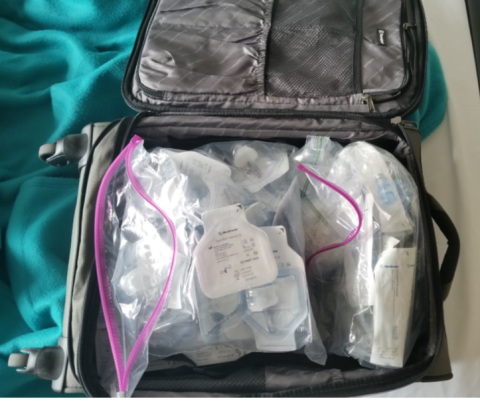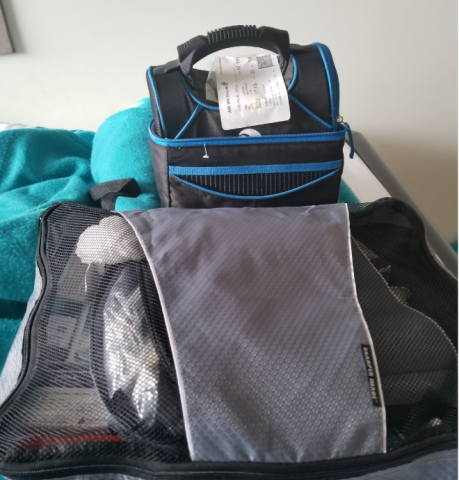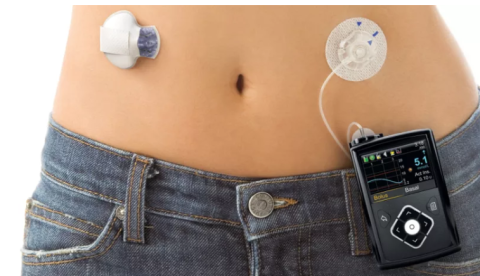Alright ladies and gents, today we’re going to take a step off of the excitement and adventure train and go for a ride on something a little less interesting to some, but incredibly helpful to others. I am talking about going abroad with a pre-existing medical condition. I’m going to cover the logistics and slightly hard reality of having Type 1 Diabetes while planning on and participating in studying abroad.
To begin: what is Type 1 Diabetes you ask?

(Rights belong to: https://beyondtype1.org/type-1-diabetes/)
So yeah! Thats me, or at least a big part of me and who I am. Having been diagnosed when I was 9 years old, I have grown used to this disease, and now at 21, I have made peace with it (on most days), and even on the bad days I use it to grow as an individual. Because diabetes has been my reality for so long, I never had a doubt in my mind that it would stop me from studying overseas. Diabetes likes to challenge and throw obsitcals my way, but I have never allowed it to hold me back from experiencing and living.
First and foremost, talk to your doctor:
Alright, so let’s say you have T1D or you have another medical condition, what is your first step? Talk to your doctor! I for one, did not really talk much with my doctor about whether or not it was smart to go abroad with diabetes, because after having this disease for 12 years now, its like an old friend, and I knew I would be safe to travel abroad. Not all circumstances are like mine, so I suggest talking to your doctor first no matter what! Either like I did, telling her out of excitement, or asking if it is possible/what your options are.
Call insurance and get your medical supplies approved:
You need to bring 6 months to a year's worth of medical supplies with you when you leave the U.S., depending on how long your program is, plus a month or so supplies extra just in case something happens. Getting these medical supplies is your life line, and this is not something you can wait until the week before to try to get done. For me, I needed to get supplies for my insulin pump, continuous glucose monitor, insulin, a new pump, a back up pump, needles, and all of my non-diabetes related prescriptions. You cannot just call up your diabetes medical supplier and your local CVS and ask for 6 months of these things. I mean you can, but they will say you need to pay upwards of $5,000 because insurance does not cover that much at one time.
I assume most people are like me and want their insurance to pay for their medical supplies, so the next step is to call your insurance and get a vacation override on all of your prescriptions, which requires contacting your medical supplier (Medtronic for me), your doctor, and then where you get your prescriptions filled (CVS, Walgreens, you get the gist). After this, you wait and wait a couple weeks for that override to get approved, and then wait a few more weeks for all of the supplies to be delivered. And thus, your excessive amounts of medical supplies have been delivered at your front door, you have them with you and you feel safe and ready to go abroad! Ehhh, then you realize, wait, how the heck am I supposed to fit all of these in my luggage….
Be aware of airline medical baggage allowance and prepare for TSA:
This is where things get a little tricky, because the medical supplies for diabetes, and i'm sure many other medical conditions take up a lot of room: See photos for proof..

(My full sized carry on stuffed with the remainder of my pump and sensor supplies. This is after I have already used two and a half months worth here in NZ)

(Remainder of my medical supplies for diabetes, practically another carry on size, as well as a cooler for my insulin)
Alright, so as it is quite clear from above, I had a lot of things to bring on a plane with me and travel across the globe with. In order to know your rights and allowances, call the airline you're flying with. Most allow you to bring on your medical supplies with you in an extra bag. I called three times to make sure each person said the same thing because to me, you can never be too sure when it comes to your life.
Even though I got the a-ok via phone, the United worker at the gate of my plane from Chicago to LA gave me the hardest time, insisting I check my extra baggage. Which by the way, please never ever check medical supplies. I mean ever. If it gets lost or breaks, you’re out of luck and that is literally life threatening. So just don’t do it. I told her this and she allowed me through, but I was forced to check my personal item and carry on, which is actually against their policy, but at this point the plane was about to leave without me and I didn’t want to even risk missing the flight just to speak to her supervisor. You win some and you lose some, ya know?
Backtracking a bit, going through TSA was a breeze compared to the above situation, even with all my excess medical supplies. With my medical supplies, I am unable to go through the full body scanner because it ruins the warranty on my pump and sensor, so I always need to get patted down. Some of my sensor supplies also can’t go through the x-ray and need to be hand checked, so you could see how this might make a small hassle at the airport security depending on the day.

(The devices I wear that have a warranty that is ruined by an x-ray and full body scanner, metal detectors are ok! Photo rights belong to: Medtronic Diabetes)
Although I did not face any problems that day, I have since faced some snarky comments and attempts to get me to pass through and allow them to put my medical supplies through the x-ray. This is where knowing your rights is huge, because you do have the right to ask for a hand check and not go through the x-ray or scanner when you are wearing a life-supporting medical device, so know this, be polite, explain your situation, but mainly, allow for extra time to deal with this! This process often adds 15 minutes on to your security check, and I would not be surprised if it added more depending on the type of day the TSA agent had, so always give yourself extra time at the airport to deal with this!
Adjusting to a new place and having things go wrong:
So you have arrived off the plane and landed in your exciting destination. Do not be a silly-nilly and think that things won’t and can’t still go wrong...I hope they don’t, but as life tends to show at times, they probably will. For example, I was so happy that I arrived with all of my supplies and in one piece, but for the first 2 weeks, my blood sugars were all whacky and out of control. I was running extremely high and had to take a lot more insulin than normal. This was probably due to the 17 hour time change that my body had to adjust to, and after a couple of weeks everything calmed down and I was back in control again with my blood sugar, but just be prepared if you’re traveling somewhere with an incredibly different time change, your body might not be too happy with you.
Also making your body a little unhappy with you is hiking up tall mountains when you’re from Indiana. My blood sugar tends to plummet when i'm doing extreme elevation gains because my body is not used to this, but with a little practice and extra care, I have been able to still complete every hard hike I have attempted since arriving here.
Besides dealing with my control of blood sugars at first, a few other curve balls were thrown my way. The first one occured when I missed my flight from Auckland to Christchurch and my insulin was getting warm. This is a big deal because if insulin is left at room temperature for too long, it will expire in 30 days. My insulin started to get warm when I had 12 hours of waiting until the next available flight to Christchurch. I began to feel terrified for what would happen if it were to go bad, because as I’ve said, this is my lifeline, and a very expensive one at that. Thankfully, the Star Alliance Lounge took pity on me and refrigerated my insulin while I waited for my flight. They even felt bad enough for my missadventures at the airport that they allowed me to hangout in the lounge all day! This was an interesting experience that I will probably never have again, so I soaked it all in. Free food and wifi included :)
A few weeks after I arrived and settled down in New Zealand, our flat fridge broke in the middle of the night and here I was again, dealing with a warm insulin problem. This one worked itself out just like the last and thankfully the insulin hadn’t been at room temperature long enough to go bad, but boy oh boy, I spent the next 30 days scared out of my mind waiting to see if the insulin still worked or not.
Applying for a pre-existing condition coverage with your overseas insurance:
After my close calls with insulin going bad, I realized that under my insurance, the one that IES Abroad and the University of Canterbury makes sure we all have, the bad insulin wouldn’t have been covered for replacement, nor would any diabetes related doctor appointment or hospitalization (if an emergency occured). This was a huge wake up call, and I realized I needed to get approved for a pre-existing condition under the overseas insurance I have. This required filing out some more forms than the other IES Abroad students as well as paying a small fee to have my condition covered, but they did end up covering me. So in case a situation like the above occurs again, or under some horrible circumstance I have an unexpected problem arise with my diabetes, I will be covered, and with New Zealand's great health care, I would be reimbursed for the total cost!
So what’s next:
Having T1D does not make an experience like studying abroad any easier, throwing many hurdles and challenges your way. As you can see from the story time I just had with you, this disease is intense and a lot of work. It’s not fun and games, and at times it has given me stress that I wish I didn’t have to deal with. While this is the sad reality of the disease, it is not the only reality. Just because I have T1D, does not mean that the experience of studying abroad cannot be mine. It doesn’t mean I cannot fly across the globe, climb mountains, and experience happiness; the world is still my oyster! Having diabetes allows me to do whatever I set my mind to, just with a wee bit more thought and preparation than the non-diabetic individual.
If you have made it this far, I just want to say thank you so much for reading and getting to know me a little better and hopefully understand Type One Diabetes a little more!
If anybody, whether a diabetic, someone with a different medical condition, or a completely disease free, healthy individual has any questions in regards to handling diabetes while studying abroad, traveling, experiencing life and the outdoors, or just wants to chat about your experience, please do not hesitate to contact me! (email: icsantan@iu.edu)
Until next time,
Bella :)

Bella Santana
<p>Hello all! My name is Bella. I am 21 years old, and am a lover of the outdoors, yoga, hula hooping, and music. I believe that life is about enjoyment, happiness, and exploration, and I hope to share my everyday findings of happiness and life with you all!</p>







